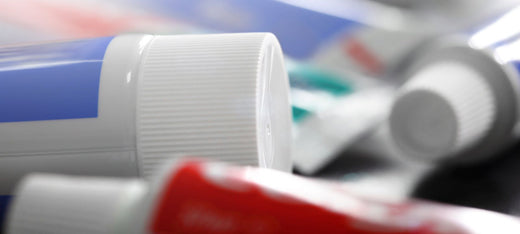History of toothpaste

Do you know the history of Toothpaste?
In the past, toothpaste was called “toothpowder”, an officinal powder which was used to firm the gums and whiten the teeth.

- A recipe for whitening powder given by Louis Joseph Marie Robert in 1805 is: powdered cloves with an addition of cream of tartar, calcined alum, powdered cochineal, sugar.
- This set was reduced to powder in a mortar.
- Other recipes added pumice, coral, and dried bone to the cream of tartar.
- At this ancient time, this “toothpowder” was applied not with a toothbrush, which did not exist, but with a finger dipped in wine
- The term toothpaste comes from the Latin "dentrificum", "dens" dentis": "tooth" and fricare: "to rub".
- The first reference to a form of toothpaste is found in an Egyptian manuscript dating from the "4th century BC"
- This manuscript mentions a mixture made from salt, pepper, mint leaves and iris flowers.
The Ancient Egyptians made a paste with a mixture of ashes and clay.
The exact ingredients of toothpaste remain unknown but it has been reported that its taste is functional and pleasant to taste.
In ancient times, people began to practice oral hygiene using fibrous chewing sticks, such as siwak.
- The Ancient Greeks and Romans expanded some of these recipes by adding more abrasive ingredients such as pumice powder, marble dust, shells of crushed oysters, crushed or calcined bone powder.
- In the Middle Ages, toothpaste most often remained in the form of a powder with different abrasives, and was applied with a cloth.
- Until the 17th century, fermented human or animal urine remained very popular: it was said to have a good detergent, disinfectant and teeth whitening effect
- In the 18th century, Antoine Furetière presented dry toothpastes in 1960 (powders based on minerals such as corals, pumice), salt and alum; animal products such as egg, snail and crayfish shells, deer horn and dry bone; and plant products (such as roots cooked with alum and oven-dried) and moist (distillation of drying herbs and astringent medicines) in use at the time.
- The first paste toothpastes marketed in porcelain pots appeared in the 19th century but they did not manage to overcome the popularity of powders before the First World War
- While selling toothpaste in a jar to his patients that he made himself, dentist Washington Sheffield was inspired by painters who used metal paint tubes to creating in 1892 the first toothpaste in a flexible tin tube, more practical and hygienic.
Elements from Wikipedia.
0 comments
Recent articles
- What is tooth decay?
- Baby toothbrush
- Baby bottle tooth decay
- Have White Teeth Naturally
- Why oral hygiene?
- Gingivitis, sore gums
Categories
- Ampheris
- ampheris Silver Care
- antibacterien
- athletisme
- avoir-des-dents-blanches
- bactérie
- bacteries
- bacteries-dentaires
- bonne haleine
- brossage des dents
- brosse a dents
- brosse a dents enfant
- brosse a dents ionique
- brosse a dents manuelle
- brosse a dents silver care
- brosse-a-dents-bebe
- carie dentaire
- carie-du-biberon
- choisir une brosse à dents enfant
- comment se brosser les dents
- comment-avoir-des-dents-blanches
- comment-nettoyer-sa-prothese-dentaire
- contamination
- couleur tube de dentifrice
- covid 19
- dentifrice
- dentifrice dangereux
- dents dechaussees
- dents-blanches
- detartrage
- effet ionique
- escalade
- foot-ball
- gencive
- gencive qui saigne
- gencives qui saignent
- gingivite
- histoire-du-dentifrice
- hygiene
- hygiène dentaire
- importance-de-l-hygiene-dentaire
- invention de la brosse a dents
- le-sport-et-la-brosse-a-dents
- mauvaise haleine
- nettoyer-sa-prothese-dentaire
- parachutisme
- plaque dentaire
- plaque-dentaire
- postillons
- quelle est la meilleure brosse a dents
- qui a invente la brosse a dents
- salive
- santé buccodentaire
- sante-bucco-dentaire
- sante-buccodentaire
- silver care
- soins-dentaires
- tartre dentaire
- tartre-dentaire
- tête brosse a dents
- tete de brosse a dents

